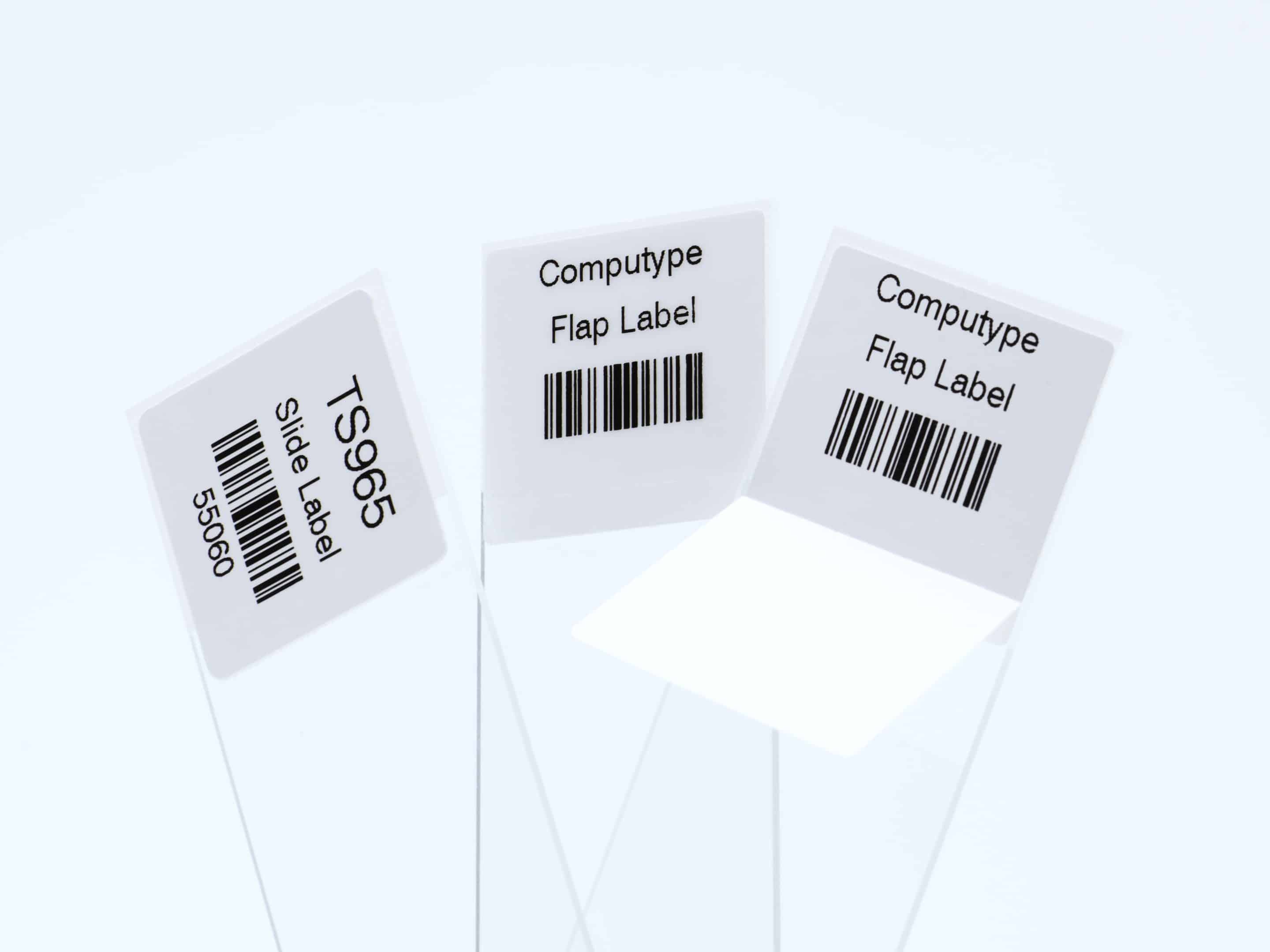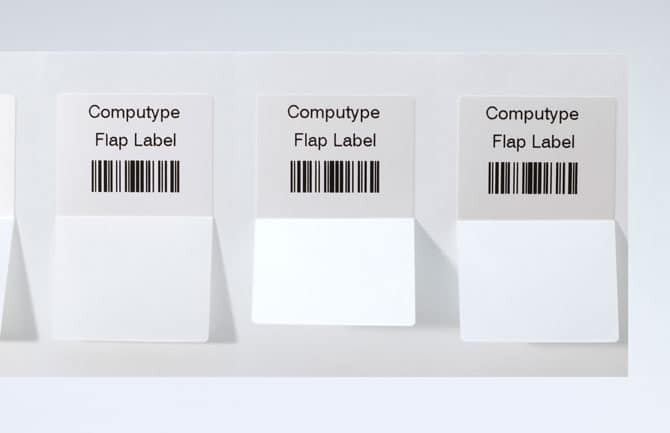A longstanding challenge in the diagnostics industry has been determining the best way to accurately identify glass slides for histopathology and diagnostic tests. Barcode labels need to remain readable to automated equipment and manual scanners through exposure to deteriorating reagents and staining chemicals—that’s a lot to expect from a label!
To combat this challenge, our team spent ample time engineering the best possible solution to accurately and efficiently identify histology slides while ensuring a readable barcode through processing in automated staining equipment. The result? The FLAP label.
‘FLAP label’ is a term we use very often at Computype—but you likely won’t hear it much outside of our four walls. So, what are FLAP labels?
What is a FLAP label?
Computype developed FLAP (Flexible-Lamination-After-Printing) labels in 1995 to help preserve label integrity in histology and histopathology applications.
One side of the label is a clear plastic with a release liner on the back. After printing your data onto the label, the release liner is removed and the clear laminate can be flattened over the image.
The laminate layer, unique to our FLAP labels, protects the printed label image during slide processing including intense staining procedures.
What challenge does a FLAP slide label address?
You can imagine that when dealing with diagnostics and sample identification, there are many factors that play into success. Ethical standards are strict—patient’s diagnoses are at stake!—so accuracy and timeliness are key. During processing, biopsies are often exposed to reagents, staining agents and other harsh chemicals—while also (with increasing frequency) being expected to remain readable and even support proper functionality of automated staining equipment—making durability and image clarity equally important.
In histopathology labs, a print on demand system is typically utilized to accommodate patient specific information that can only be obtained shortly before the label is printed—this limits the number of print technology options. We typically recommend thermal transfer printers in cases like these, since they are generally compact, user friendly and the technology itself is extremely durable in comparison to other on-demand options.
In an automated testing process, the slides will usually lay flat in carousel-like instruments. During their time in this instrument, the samples are exposed to a variety of reagents and stains. The stains that go onto the slide do so in a very controlled environment within the instrument, and in liquid form.
Computype has been working with global diagnostic organizations since the early 1990’s, so we have encountered just about every challenge that comes with this ever-changing industry.
The main challenge our customers were facing was that once a biopsy was collected and put on a slide, the harsh chemicals and stains involved in sample processing would damage the barcode—often leaving it unreadable. It is necessary that the label on the slide is able to resist the chemicals in these stains and reagents. In addition, it is important to have a label that will prevent the stain from flowing over and off the slide.
How are FLAP slide labels different?
The label itself resembles an open book—on the left side a barcode image—often accompanied with other patient specific information in human readable form. The right side of the ‘book’ is essentially a laminate waiting to be used. After the symbol has been printed the user peels the release liner from the laminate, closes the ‘book’ and seals the image under the protective coat. In addition to protecting the barcode image this succeeds in creating a hydrophobic barrier that prevents the stains from coming into contact with the barcode.
In order to ensure accuracy, each FLAP label needs to be uniquely identified and matched with a specimen. In addition, it needs to be guaranteed to adhere to the slide and remain scannable. If the adhesive were to fail, another biopsy experience is necessary, leading to unnecessary time and expense. The FLAP label has proven to successfully ensure durability and readability during diagnostic processes in conjunction with automated staining equipment to ensure accurate and efficient test results.

